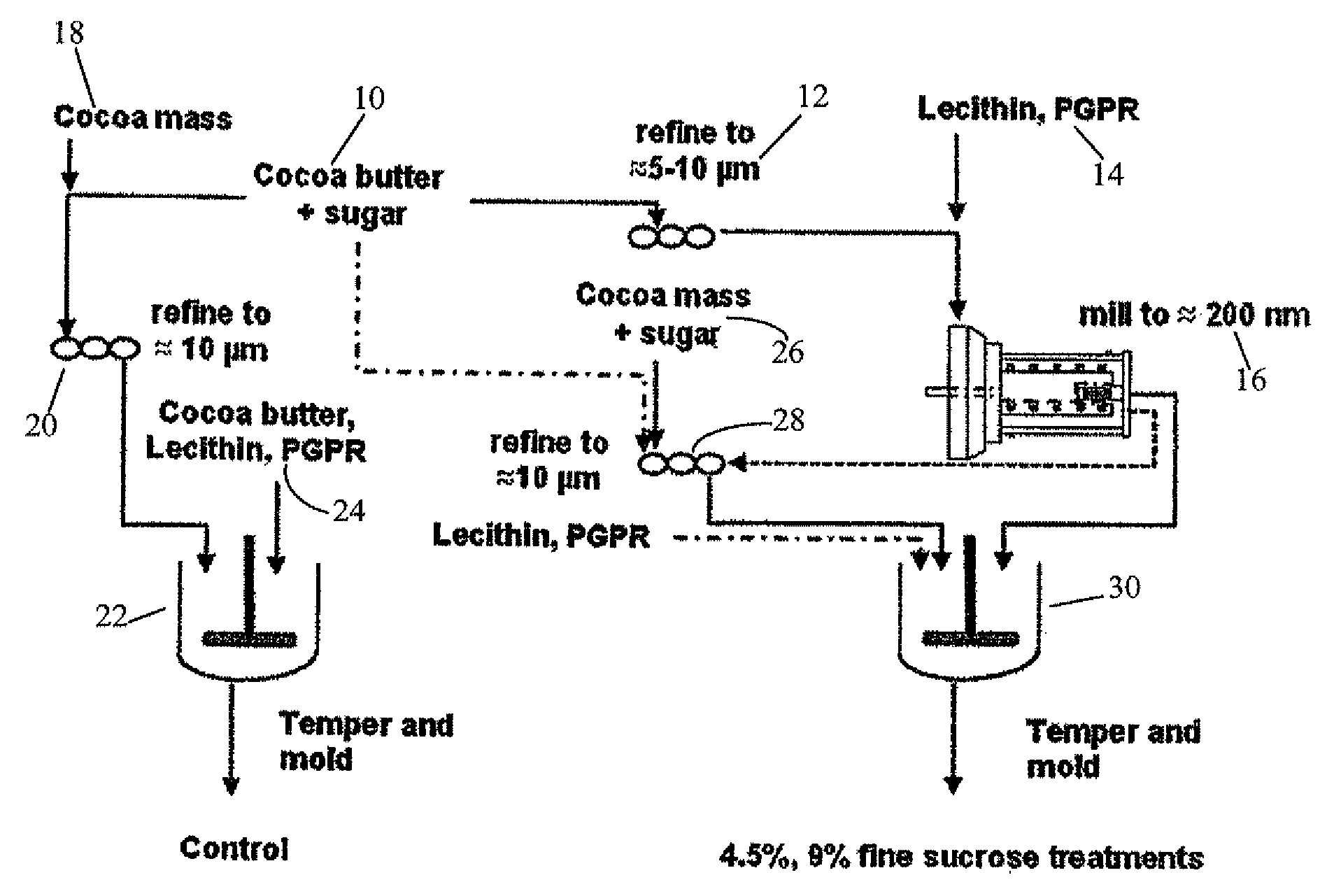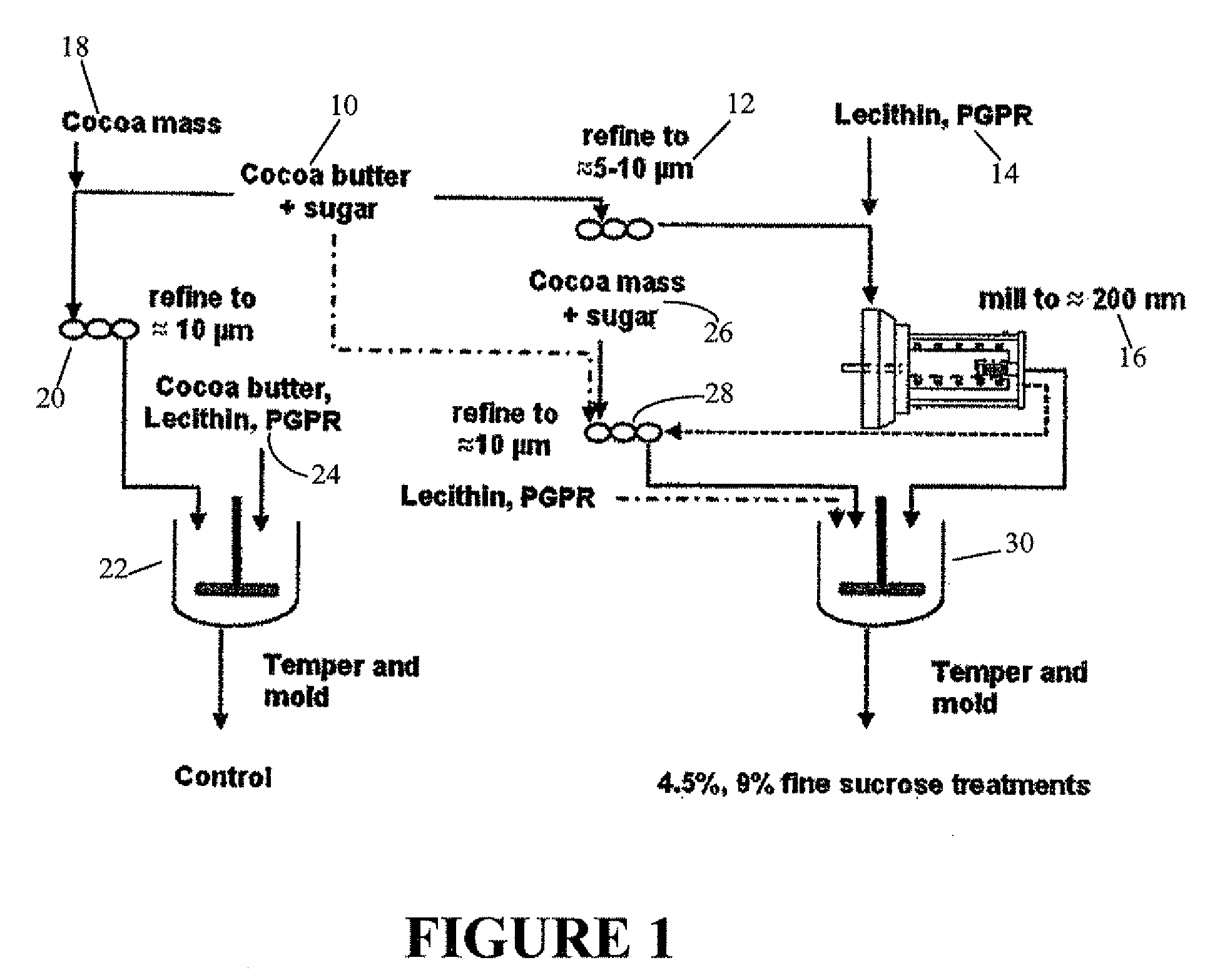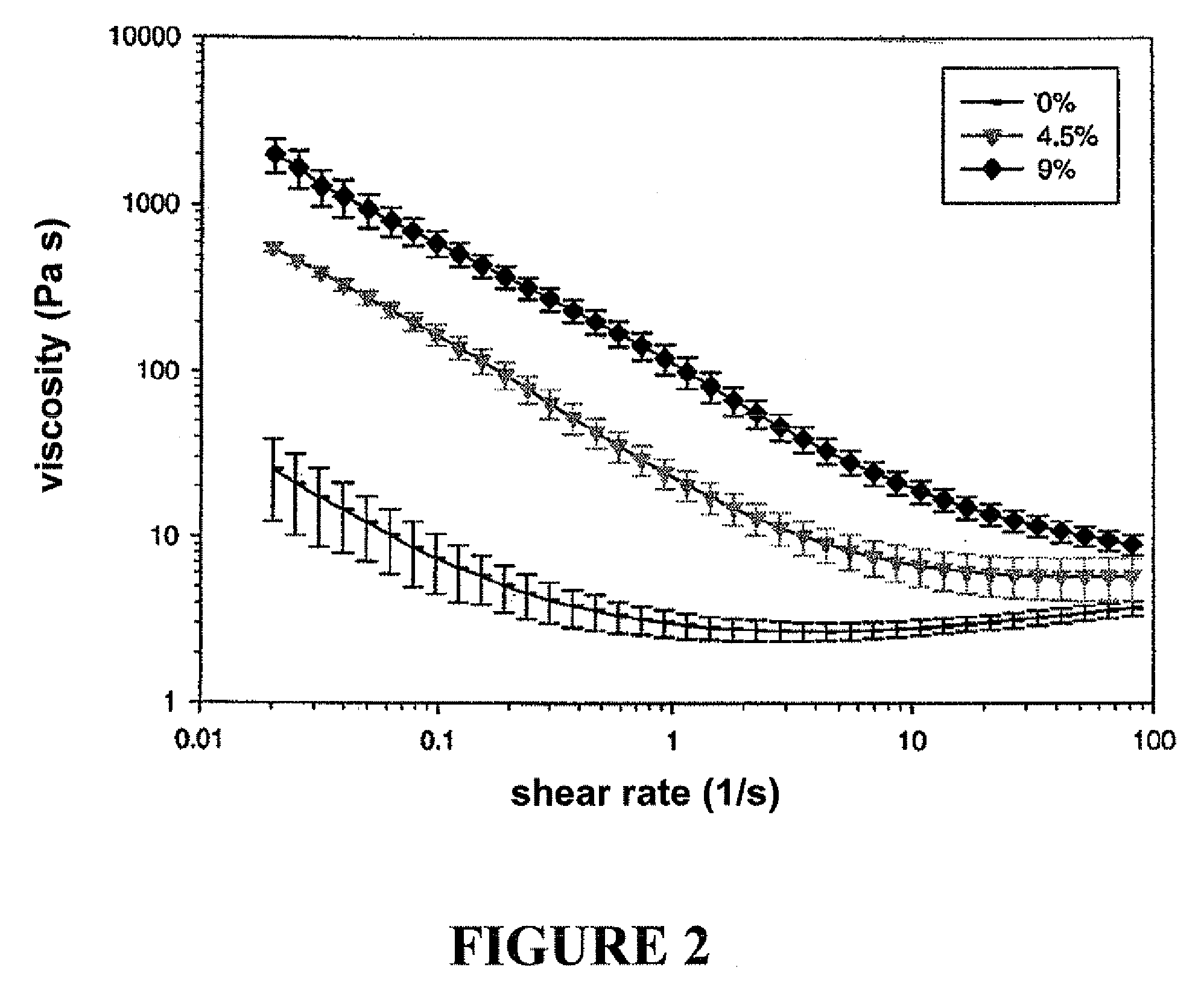Temperature resistant chocolate composition and method
a composition and temperature resistant technology, applied in the field of temperature resistant chocolate composition and method, can solve the problems of undesirable melting of edible chocolates and complex confections
- Summary
- Abstract
- Description
- Claims
- Application Information
AI Technical Summary
Benefits of technology
Problems solved by technology
Method used
Image
Examples
example 1
[0092]In accordance with FIG. 1, a suspension of cocoa butter and sugar 10 (ca. 75% w / w sugar) was prepared and milled using a roller mill to produce a median particle size of about 10 microns 12. A portion of the milled suspension was then diluted with cocoa butter and 3.5% lecithin and 3.5% w / w PGPR 14 to a final concentration of 30% sucrose and subsequently milled in a media mill (85% charge of 0.3 mm media, 3000 revolutions per minute agitator speed) to a final particle size of 200 nanometers 16.
[0093]Three compositions were prepared, all with equal proportions of sucrose, cocoa butter, cocoa solids non-fat, lecithin, and PGPR. Particular formulas are shown in Table I, and individual methods of fabrication are also illustrated in FIG. 1. A control composition was prepared which incorporated only conventionally refined sucrose. This composition was prepared by combining the cocoa butter and granular sucrose 10 with cocoa mass 18 in a Hobart mixer and then refining using a 3-roll ...
example 2
[0101]In accordance with the procedure described in Example 1, a composition containing the following ingredients was prepared.
TABLE 2Composition of dark chocolateweight percentIngredient0% nanosized sucrose9% nanosized sucroseSucrose, nanosized09Sucrose, conventional54.445.3sizeChocolate liquor3030Cocoa butter14.614.6Lecithin0.70.7PGPR0.30.3
[0102]The probe position was recorded throughout the test and data were recorded as a percentage change in probe position as a function of temperature, as described in Example 1.
[0103]Thermal stability of the test samples was evaluated by subjecting a cylinder of tempered molded sample to a temperature ramp of 20° C. to 48° C. at a ramp rate of 2.5° C. / min with a constant normal force of 0.025 N applied. Temperatures above approximately 40° C. will result in all of the lipid continuous phase being present in a liquid state. The resulting change in DMA probe position as a percentage of initial sample height is plotted against temperature in FIG. ...
example 3
[0104]The above procedure of Example 2 was repeated, except that the chocolate used was either milk chocolate or compound chocolate, containing the ingredients in Tables 3 and 4, respectively.
TABLE 3Composition of milk chocolateweight percentIngredient0% nanosized sucrose9% nanosized sucroseSucrose, nanosized09Sucrose, conventional48.439.4sizeChocolate liquor1212Cocoa butter20.620.6NFDM1515AMF33Lecithin0.70.7PGPR0.30.3
TABLE 4Composition of compound chocolateweight percentIngredient0% nanosized sucrose9% nanosized sucroseSucrose, nanosized09Sucrose, conventional51.442.4sizeCocoa butter substitute30.630.6NFDM1010Cocoa powder77Lecithin0.70.7PGPR0.30.3
The thermal stability of the chocolate samples is depicted in FIGS. 6 and 7, respectively.
PUM
 Login to View More
Login to View More Abstract
Description
Claims
Application Information
 Login to View More
Login to View More - R&D
- Intellectual Property
- Life Sciences
- Materials
- Tech Scout
- Unparalleled Data Quality
- Higher Quality Content
- 60% Fewer Hallucinations
Browse by: Latest US Patents, China's latest patents, Technical Efficacy Thesaurus, Application Domain, Technology Topic, Popular Technical Reports.
© 2025 PatSnap. All rights reserved.Legal|Privacy policy|Modern Slavery Act Transparency Statement|Sitemap|About US| Contact US: help@patsnap.com



